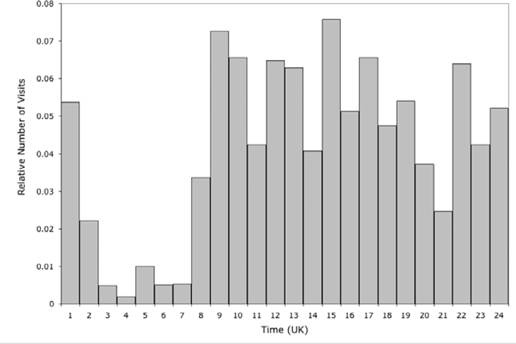Section 9.2. Time Zone
9.2. Time ZoneIf direct clues about location are not forthcoming, then you may be able to infer something from the time at which an email message was received or that a web site visit was logged. This is definitely a low-resolution method but it can be quite useful in eliminating certain parts of the world from consideration. It is based on patterns of typical human behavior and simple probability. Around the world, people tend to work during the day and sleep at night. They may well work on their home computers during the evening, but relatively few do so between, say, midnight and 7 a.m. local time. I realize there are many exceptions to this rule, but it applies to most people. You can combine that pattern with the time zones used around the world to assess where a message might have come from. Each standard time zone represents a range of longitude values that cover 1/24th of the Earth's surface. Time zones tell us nothing about latitude. For example, I live on the West Coast of the United States and my father lives in the United Kingdom, in a time zone that, for most of the year, is eight hours ahead of me. My father is typically up and about between 8 a.m. and 10 p.m. So if he sends me an email, I would expect it to arrive between midnight and 2 p.m. I would be surprised if it arrived outside that range and might question its authenticity. To demonstrate that this pattern applies beyond my father, I extracted all records in my web server logs that originated from IP addresses that are managed by BT, a leading ISP in the United Kingdom. Restricting the data to this one ISP ensured that all activity came from within the same time zone. Figure 9-1 shows the distribution by hour at which those visits occurred, mapped back to U.K. time. This fits well with what you might expect, although there are clearly quite a number of night owls. Figure 9-1. Distribution of U.K. activity by hour You can use this pattern in a broader sense to assess where a message of site visit might have come from or, more realistically, where it probably did not come from. For example, a timestamp of 3 a.m. local time in Seattle is very unlikely to have come from someone in the United States. Even on the East Coast, that is still only 6 a.m. That leaves most of the world, from Europe through to Japan, as possible countries of origin, but in combination with other information, this can be a useful technique. |